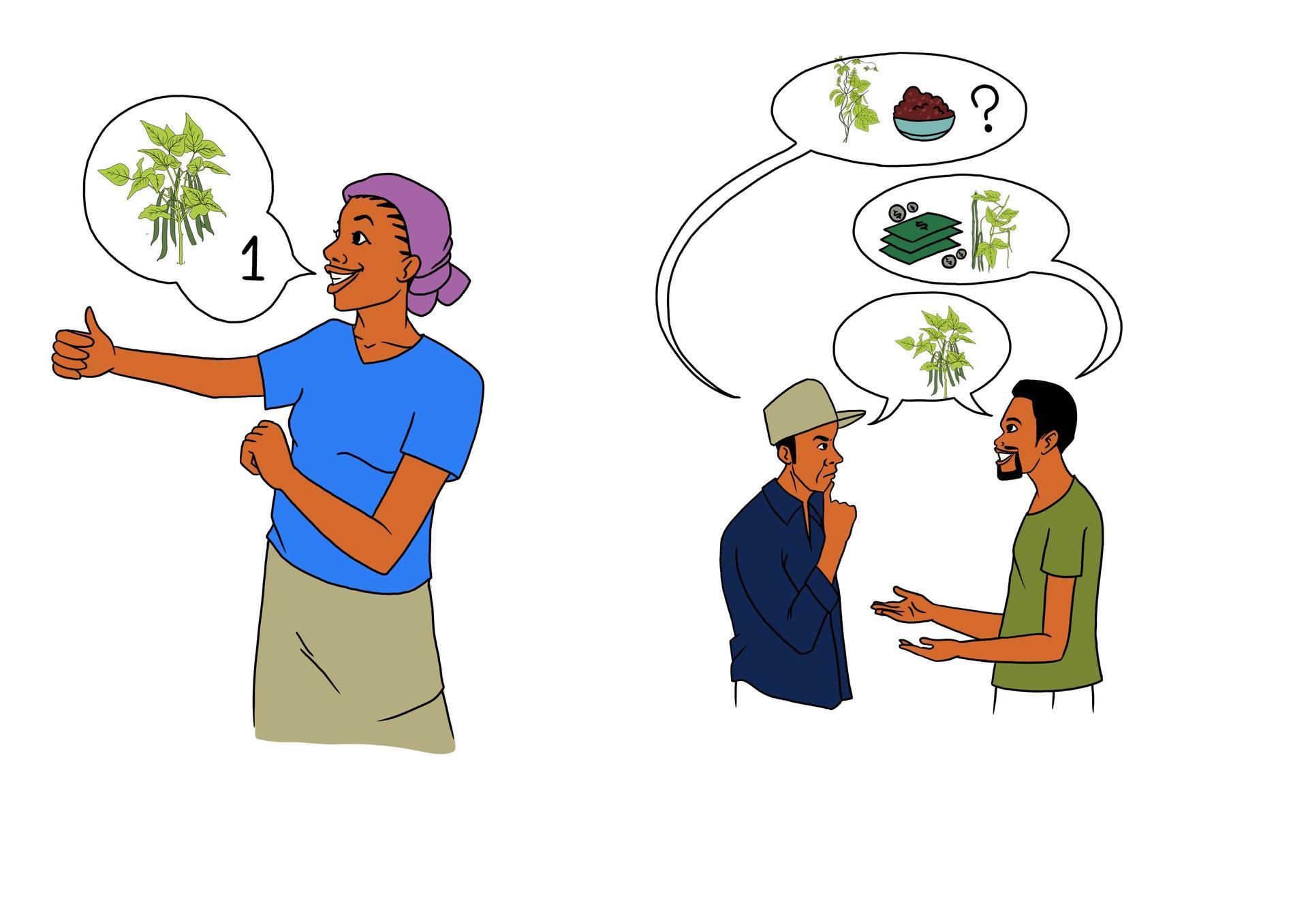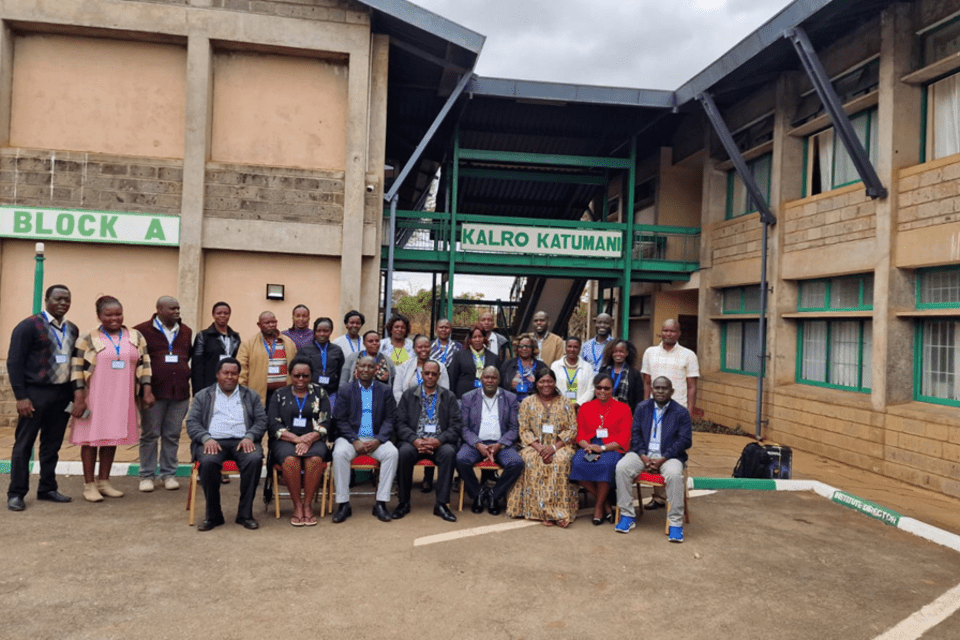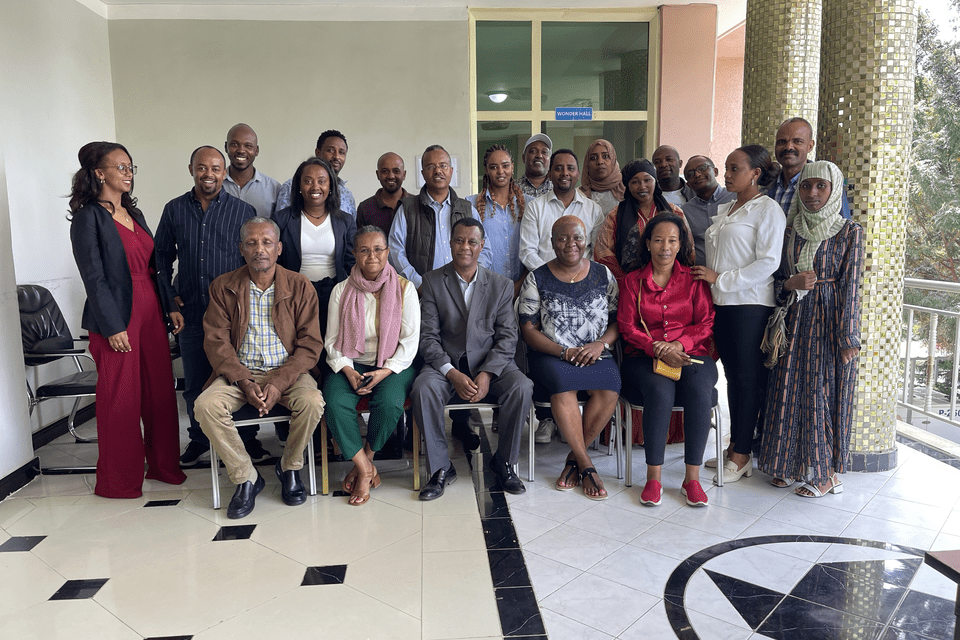From the Field Current practices and institutional arrangements in breeding by CGIAR – NARS

The Consultative Group on International Agricultural Research (CGIAR) market intelligence initiative aims to bring together inclusive and strategic information on future crops’, market segments, and trait priorities that sharpen crop breeding investments aligned to the needs and preferences of farmers, agri-business and consumers by engaging public and private sector partners toward stronger crop breeding partnerships to benefit farmers across the globe. "The results presented here are from seven key informant interviews with NARS and CGIAR breeders and crop leads from Sub-Saharan Africa"
By: Eileen Nchanji, Bela Teeken, Hope Webber and Valerien Pede
Work Package 5 of the initiative is carrying out a qualitative study with CGIAR and National Agricultural Research Systems (NARS) colleagues to understand better key persons responsible for main breeding-related decisions (e.g., which pipelines and trait/s to prioritize) and what kind of information/data is used to prioritize investment decisions and from whom such information is acquired. We thus base this study on four research questions:
-
What are the institutional breeding arrangements within the CGIAR, NARS and Private Sector, especially with regards to who are part of breeding teams, which disciplines are included and to what extent are they involved in the breeding decision making process?
-
Where do breeders source information that is used to give direction to the breeding program?
-
What are the challenges breeders face in acquiring information to set breeding objectives?
-
What are the main factors breeders identify as contributing to a successful breeding program and what is their perception of successful breeding?
The results presented are from seven key informant interviews with NARS and CGIAR breeders and crop leads. We spoke with 2 female and 3 Male breeders from NARS and 1 male breeder and crop lead from the CGIAR. Crops covered are common beans, maize, cowpea and soybean.
Most breeders focus on biotic and abiotic traits, starting with yield, grain quality and adding diverse resistance to climate (like drought, heat, moisture and temperature resistance) and disease resistance. Other traits relating to early maturity, seed size and colour are also mentioned depending on the market class and demand from the market. We are seeing an increasing interest in food product quality traits and nutritive compositions like short cooking time, taste & palatability such as food texture, micronutrient traits like iron, zinc and, protein, due to demand from value chain actors like processors. Pod shattering has been mentioned as a trait that can reduce drudgery, especially for women and youths. Marketability (that is, high demand, high price, seed colour and size) is also increasingly mentioned as most breeding program move towards demand-led breeding and focus on value chain actors' interests.
Breeding priorities are sometimes based on the choice of traits, the economic weight of each trait as well as the agro ecologies of production. Recently, we see a shift towards where most impact should be created (food security, health, nutrition etc).
“I want to make an impact, if, because of my variety, like in Burundi, children decide to go to school because they will find this good porridge and drink in school. I think that those are the kind of things that I will privilege. This is key because that's how I can make an impact directly - developing a variety for impact that addresses key issues. if I have to give you a practical example when breeding for beans, I will not bother myself, putting much more emphasis on yield or disease resistance. It does not mean that the resistance trait does not have value. Still, iron and Zinc and overall aspects like cooking time are very important for beans, so I would rather not, focus only on yield or disease resistance for the sake of it”Common bean breeder.

These choices are also influenced by information from farmers, -Mainly through participatory varietal selection, informal communications and farmer field demonstrations -, colleagues from different disciplines, private companies, universities, crop associations, country priorities and a broad range of partner institutions - from multistakeholder platforms, breeder meetings, strategic meetings and discussion forums - and literature reviews.
Though breeders state that very relevant and hands-on concrete information flows from these varied partners, it is often ad-hoc, informal and unstructured, and in most cases not documented and thus, breeders still have the responsibility to make sense of this intelligence. Most of the information accessed does not come with statistics making it difficult to validate like for example the importance of a particular market segment. Information might be biased to meet the interest of one institution over the other.
Though interdisciplinary teams are encouraged, some breeding teams are only made up of technicians, breeders and biometricians. Where interdisciplinary teams exist, we mostly have gender, market, nutrition and communication experts integrated. Here the breeder should be the champion and collaborator and not carrying out activities that are assigned to a different expert because of lack of proper engagement and/or funding of such experts.
Other constraints in breeding are limited infrastructural facilities. For example, for phenotyping (such as nutritional and food product quality aspects), gene editing and financial capacity. With limited funding, prioritisation for market segments favours grouping according to cycle length, often based on production area and market demand. Missing information not often accessible is gender information along the value chain, and the related trait preferences of consumers and processors.
For example, when there is limited funding, the lion share of the money is allocated to breeding trials, doing a molecular study or other technical breeding and much less to conducting market research and social research to identify crop user preferences and identify relevant diversity among them. Gender issues and gender comprehension are quite loose, among breeders.
Success in breeding programs is defined differently. To some, it is genetic advances, mainly related to yield. To others, it is the number of varieties advanced and registered. For some, it is creating impact in relation to the passage below:
“How do we want to transform farmer livelihood if people cannot get economic return on what we do? How do we want to transform farmers' livelihoods if what we are doing is not getting attention even in the household? Considering gender issues is key ….. where women, children and men have their niche”. Common bean breeder
The pathway towards success is having access to a large germplasm base, a good team, partnerships, various testing networks, good communication and incentives like royalties for varieties released. Breeders individually are evaluated and thus defined by the number of lines advanced, released, varieties registered, and peer-reviewed articles published.
A breeding program without financial, infrastructural and multidisciplinary human resources, will not work.
“The way we get market information has to change in the future. We need to really work in a way that we Improve getting market information”. Soybean breeder
“If we can have a kind of tool, or tools, to improve the market intelligence, it'll be very good.” Common bean breeder
“You need market and gender research to develop product profiles, where it is clear who you are targeting and the impacts on the clients and community. This way, you can convince a donor to fund the product profile, but if you don’t have this information looking for funding becomes difficult”. Ibid.
We would like to thank all funders who supported this research through their contributions to the CGIAR Trust Fund.
The Team

Nchanji Eileen Bogweh
Gender and Social Inclusion expert, Alliance of Bioversity International & CIAT


Valerien Pede
Head - Transformative Policies and Investments Unit under the Department of Sustainable Impact through Rice-based systems, IRRI.
See Also



